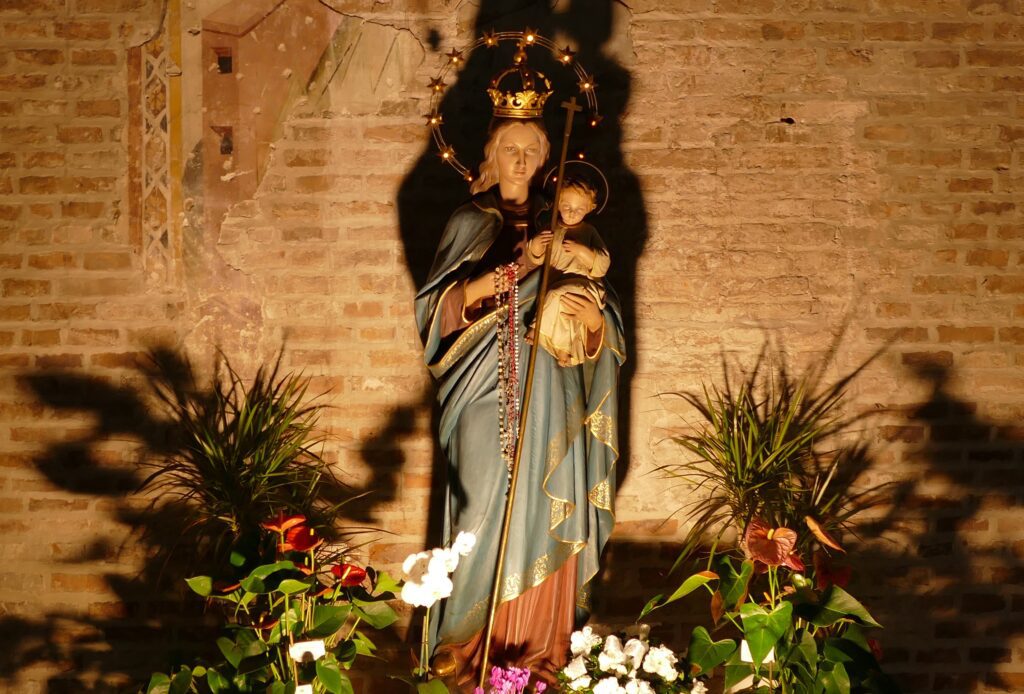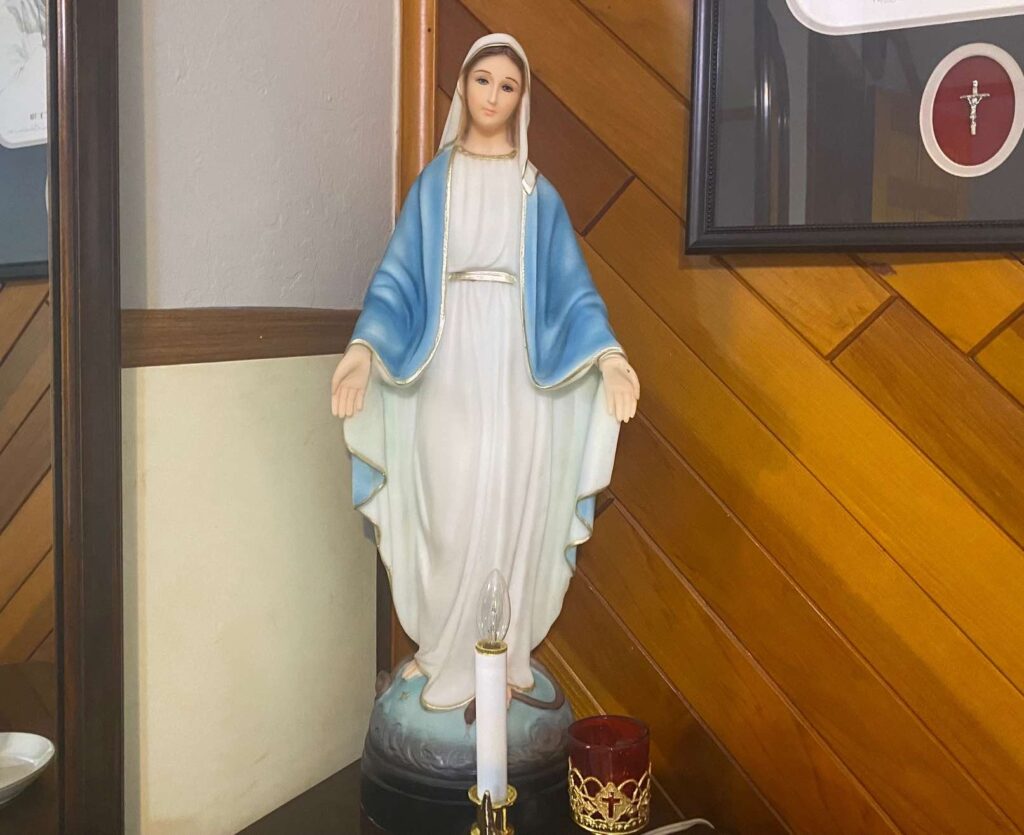Merry Christmas, a grace-filled New Year, and a blessed celebration of Mary the Mother of God!
On the eighth day of Christmas, the Catholic Church celebrates the solemnity of Mary, the holy Mother of God. Hence, this article is on the role of the Blessed Mary as an excellent model for living our God-given mission. Also, it highlights why the Solemnity of Mary, the holy Mother of God, is relevant to believers.
On Valentine’s Day in 1969, Saint Pope Paul VI released a document called Mysterii Paschalis. This short but influential document brought new attention to how we celebrate the paschal mystery, that is the Lord’s birth to death and resurrection, in the liturgical year. As a result, the Holy Father proclaimed that the Church observe January 1 as the Solemnity of Mary, the holy Mother of God. Five years after (1974), the saintly pope reaffirmed the importance of honoring Mary in another document, the Apostolic Exhortation, Marialis Cultus. He emphasized why her feast day should have pride of place as the first celebration in a new year. Also, he highlighted three significant reasons for continuing this revered tradition.
The First Reason for Celebrating Mary, Mother of God on January 1
First, the celebration honors the role of Mary in salvation history (Marialis Cultus, no. 5). Man’s fall in Adam and Eve will be restored through the new Eve’s child. This was God’s plan from the beginning. We realize with joy how it was through a woman that God chose to become man, taking the flesh to redeem those under the Law (Galatians 4:4-5).
We reverence this divine plan, which is by no means a small part of God’s saving plan. Honoring God’s work is worshipping the author of that work. It is much more so when, with devout affection, we revere the greatest of God’s plans in saving the world, namely, becoming like us (except in sin) to save us.
The Second Reason for the Celebration
Here is the second reason the Holy Father offers. It “exalts the singular dignity which this mystery brings to the holy Mother…through whom we were found worthy to receive the Author of life” (Marialis Cultus, no. 5).
Any Christian who argues that the role of Mary in bearing the Lord is a disposable work in God’s salvation plan is making an error in their judgment. Also, the claim is not biblical. To make such a claim is to treat lightly this singular, non-repeatable, and perfect plan God set forth for the redemption of all creation. In terms of honor, no one will compare to that woman through whom God became man.
Mother Mary’s response confirms this honor. “All generations will call me blessed” (Luke 1:48). She prefaces this by acknowledging her lowly state (v. 48a) and concludes with worship to the almighty God. “Holy is His name” (v. 49).
All Glory to God
One notices that in acknowledging the work of God in her life, Mary embraces it in the tone of reverence and worship to the Almighty. She sees her divine mission as the work of grace. God chooses the lowly for the great mission of being the “God-bearer” (Theotokos). Despite her exalted place, Mary renders all glory to God. In doing so, she shows us how to fulfill our missions, namely, in humility and for the greater glory of God. She is our perfect model for fulfilling the mission to which God calls every one of us.
Mother Mary is faithful. She stands firm, backed by the grace of her Son, Jesus, up to the point of the crucifixion. She carries the mangled Jesus, bearing the wombs of the Son in a deeper way as Our Lady of Sorrows. As she stands, so will all those who follow in her footsteps on the way of the cross of saving grace unto the Crucified Lord, by whose wounds “we are healed” (1 Peter 2:24).
The Third Reason
The Holy Father offers the third reason for the celebration. It is “a fitting occasion for renewing adoration of the newborn Prince of Peace, for listening once more to the glad tidings of the angels (cf. Lk. 2:14), and for imploring from God, through the Queen of Peace, the supreme gift of peace.” Hence, the Holy Father emphasizes that the Church sets January 1 as the World Day of Peace (Marialis Cultus, no. 5). It shows the strong connection between the feast and Christmas.

Christmas celebration of the Lord’s birth is also our celebration of world peace. Why? Because as I mentioned during my Christmas message, “Christ is our peace” (Ephesians 2:14). This being the case, the Mother of the Lord is Our Lady of Peace. It cannot be otherwise since peace is found in the heart where the Prince of Peace makes a home.
Consequently, the bearer of the Prince of Peace has a unique place in the Divine Peace offered to the world. This, too, is worship. Why? It is because we reverence the very plan of God through which the walls of division that separate peoples from one another and from God are broken by the Prince of Peace (Ephesians 2:14).
Worship and the Blessed Mary
Worship is our primary task as God’s people (Paul VI, Marialis Cultus, para. 1). The Church teaches that coming together in worship is “the aim and object of apostolic works” (Constitution on the Sacred Liturgy, Sacrosanctum Concilium (SC), no. 10).
Therefore, everything we do as believers should, in some ways, glorify God, rendering Him worship. Also, they should bring us closer to the heart of God’s assembly, where we, as one body, unite in worship to the Holy Trinity. We shine with the holiness that flows from our encounter with the Lord in worship. Everything we do as we carry on God’s mission in our lives is worship in little ways. But there is the worship that unites the entire body of Christ, for which the Church gathers and prays. It is called Sacred Liturgy—the public worship of God’s people.
The Holy Father reminds us that “devotion to the Blessed Virgin Mary is an indication of the Church’s genuine piety.” It fits “into the only worship that is rightly called “Christian,” because it takes its origin and effectiveness from Christ, finds its complete expression in Christ, and leads through Christ in the Spirit to the Father.” (Paul VI, Marialis Cultus, Introduction, para. 4).
Worship, Mary, and Us
Mother Mary, the new Eve, is the perfect model of this true worship of God. She is the one whose perfect yes was the pivotal moment of the Incarnation. In worship, we partake in the intimate life of God. It is the life Mary already bore in her womb and reverenced in her daily service to Jesus, whom she tended, fed, and listened to as he lived on Earth. Thus, we learn from her in the mystery of spiritual communion and the physical sense of being the only one whose flesh was by grace the bearer of the Incarnate Lord. Being human, we relate to her as our model.

The Holy Father reminds us that “every authentic development of Christian worship is necessarily followed by a fitting increase of veneration for the Mother of the Lord” (Paul VI, Marialis Cultus, Introduction, para. 4). One cannot speak of the Incarnate Lord, who is present at every Christian worship, the priestly office of Jesus (SC, no. 7), without reference to his Mother. Therefore, Mary is God’s choice through whom the Incarnate Lord takes flesh and lives among us.
Hence, we at Gratia Vobis Ministries (meaning, grace to you), embrace the role of Mother Mary in our lives and ministry. We have special connection to Our Lady of Grace, to whom we dedicate our ministry.
The Word became flesh in the womb of Mary and dwelt among us. Mary, holy Mother of God, pray for us. Amen.
New Year Video Inspiration
This is How to Make the New Year and its Unimaginable Possibilities Worthwhile | Fr. Maurice Emelu

Happy New Year, Father. Thank you for responding to God with your “yes”! Thank you for your tireless completion of endeavors and the sharing of your faith. You are appreciated !
God is the one who loves me first and has continued to show me grace and mercy. My response is by His grace, a gratitude for all He continues to do. To Him be the glory. Amen. Thank you for being a faithful supporter to our ministry. May this year bless you abundantly with God’s choicest favors. Amen.